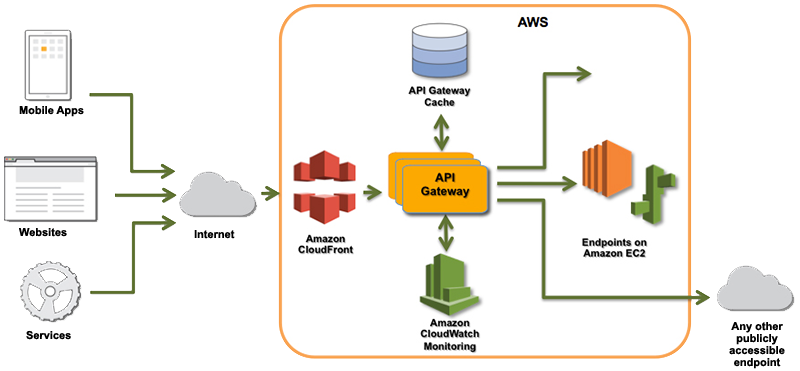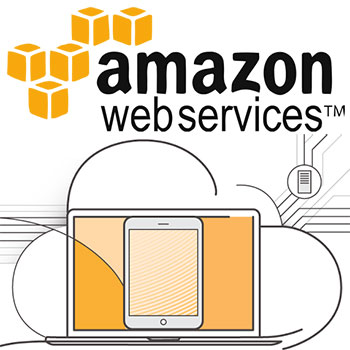Forget About Cloud Infrastructure, It’s Now About Apps & API’s, Says Amazon’s CTO

At the Amazon Web Services Summit (AWS) in New York City yesterday, Werner Vogels, CTO of Amazon, spent two hours explaining why the cloud changes the game for application developers.
For most of the history of modern computing, application developers needed to consider and understand infrastructure in order to build applications.
Not anymore.
The Amazon Web Services Summit (AWS) cloud isn’t just about providing compute, storage and networking resources, AWS’ new focus is enabling developers to deliver and build applications.
Amazon has launched over 500 new services in recent years to support that mission – and introduced several new ones at the Amazon Web Services Summit.
“We built services so you can focus on the exact product you want to build,” Werner Vogels, CTO of Amazon said.
While lower costs were the key driver at the beginning of the cloud era, Vogels said the emphasis has shifted to agility and the ability to test and iterate new applications faster than before.
“Lower costs are the sizzle, and agility is the steak,” Vogels said. “Everything is software; there is no hardware anymore.”

Leveraging Docker, APIs and More
Vogels brought Keith Homewood, senior application architect at Nordstrom, on stage to share the retailer’s experience with AWS. Homewood detailed how Nordstrom is using Amazon’s Lambda service to build a recommendation engine that helps customers find the products they want.
“Lambda is the coolest thing we’ve done. It lets developers build code without infrastructure,” Vogels said. “No server is easier to manage than having no server.”
Vogels also highlighted the Amazon EC2 Container Service, which helps developers make use of Docker containers. Online education service Coursera is an Amazon customer using the container service as a way to help estimate resource usage and to help distribute applications, he noted.
The New York City Department of Transportation also uses AWS to build multiple applications that enable New Yorkers to more easily get around the Big Apple. In a bid to help make it even easier for mobile developers to build apps, Vogels announced the AWS Device Farm, a service for building and testing applications across myriad mobile devices.
Vogels also announced a new Amazon API Gateway service that provides a cloud delivery engine for application developers to decompose apps into smaller blocks and connect things together. The modern Internet is all about services, he said, and that’s what APIs enable.
“There has never been a better time to go build applications,” he said.
Press Release:
Amazon Web Services Announces Amazon API Gateway
New service makes it easy for anyone to build and run reliable, secure APIs at any scale
Amazon Web Services Inc. (AWS), an Amazon.com company, today announced Amazon API Gateway, a new fully managed service that makes it easy for AWS customers to create, publish, maintain, monitor, and secure Application Programming Interfaces (APIs) at any scale.
With a few clicks in the AWS Management Console, customers can create an API that acts as a “front door” for applications to access data, business logic, or functionality from their “back-end” services, such as workloads running on Amazon Elastic Compute Cloud (Amazon EC2), or code running on AWS Lambda.
Amazon API Gateway handles all of the tasks associated with accepting and processing billions of daily API calls, including traffic management, authorization and access control, monitoring, and API version management. Amazon API Gateway has no minimum fees or startup costs, and developers pay only for the API calls they receive and the amount of data transferred out.
An Amazon API Gateway Call Flow

With the proliferation of mobile devices and the rise in the Internet of Things (IoT), it is increasingly common for companies to make their back-end systems and data accessible to applications through APIs. Because so many applications use these APIs, and communities of developers rely on them, companies are spending an increasing amount of time and effort developing and managing their APIs. They have to create and publish APIs, update and maintain API versions, and invest in resources to monitor and ensure the reliability, security, and performance of APIs that may experience thousands of API calls per second.
And, companies have to build and manage systems to authorize access to APIs and verify incoming API requests before granting access to the back-end services. Now, with Amazon API Gateway, customers have a pay-as-you-go service that takes care of all of that undifferentiated operational and security heavy lifting involved in creating and maintaining APIs, authorizing access to them, verifying API calls, monitoring API performance, and ensuring back-end services can handle heavy API traffic. And, to make it easy for developers to use these APIs in their applications, Amazon API Gateway can generate client SDKs for a number of platforms, including JavaScript, iOS, and Android.
“Building and running rock-solid APIs at massive scale is a significant challenge for customers. And yet, this is one of the most important ingredients for building and operating modern applications that are consumed through multiple devices,” said Marco Argenti, Vice President, AWS. “At AWS, we have over nine years of experience running some of the most heavily used APIs in the world. The Amazon API Gateway takes this learning and makes it available to customers as a pay-as-you-go service that eliminates the cost and complexity of managing APIs so that developers can focus on building great apps.”
To help customers protect access to their back-end services, Amazon API Gateway allows customers to use familiar AWS security tools such as AWS Identity and Access Management (IAM) to verify and authenticate API requests. Amazon API Gateway lets companies run multiple versions of an API simultaneously so that they can develop, deploy, and test new versions of their APIs without impacting existing applications.

Once an API is deployed, Amazon API Gateway allows customers to control the number of API requests that hit their back-end systems within a certain time period to protect them from traffic spikes, and helps reduce API latency by caching responses. Amazon API Gateway also monitors the usage and performance of back-end services, providing metrics such as number of API calls, latency, and error rates.
For customers who want to build new back-end services without provisioning new server infrastructure, Amazon API Gateway integrates with AWS Lambda, which solves this problem. AWS Lambda allows customers to write a bit of Java or JavaScript code and associate that code with an event trigger.
When an event (e.g. a particular API call) meets the trigger criteria, AWS Lambda executes this code on AWS compute infrastructure that is automatically managed. AWS Lambda automatically spins up the compute, makes sure it’s run in a fault-tolerant fashion, spins down the compute when it’s no longer needed, and only charges customers for the compute consumed (in increments of 100 milliseconds).
This frees customers from having to provision and manage fleets of servers to power their back-end services.
Mentor Graphics is a leader in electronic design automation, enabling companies to develop better electronic products faster and more cost-effectively. “We use microservice architectures for virtually all of our development, and have been looking for a more simple way to maintain and monitor APIs as we scale,” said Keith Childers, Solutions Architect, Mentor Graphics Corporate Web Services. “Amazon API Gateway is a perfect fit for this.
We use it together with AWS Lambda to create and deploy microservices that often experience spiky traffic, without worrying about managing the underlying infrastructure and compute resources. Now we’re able to focus on developing innovative services and make them available to developers through APIs. Amazon API Gateway has really made our developers’ lives much easier.”
Twilio is a cloud communications platform that enables developers and businesses to easily embed, scale and operate real-time communications in their software applications. “The Amazon API Gateway is a significant value-add for developers because it allows them to focus on developing great apps instead of securing and running their APIs,” said Nico Acosta, Product Manager for Twilio. “Amazon API Gateway is a win for our joint customers with AWS because it makes it really easy for developers to connect Twilio and AWS to build highly performant and scalable voice applications.”
Mobiquity is a mobile professional services firm, assisting organizations with the transition to mobile. “Amazon API Gateway gives us the ability to leverage AWS Identity and Access Management (IAM) for setting fine-grained access permissions on APIs, which is key for allowing multiple developers to access our customers’ back-end services,” said Ty Rollin, Chief Innovation Officer at Mobiquity. “Helping our customers continuously innovate is an important goal for our business.
Thanks to Amazon API Gateway’s easy and powerful console experience, our developers can create and deploy new APIs in a matter of hours – a process that used to take weeks – without involving DevOps every time. Our developers feel like they can iterate rapidly and add new functionality when they want to, and that makes Amazon API Gateway an extremely valuable tool for us.”
Related: Amazon Exposes How Profitable The Cloud Can Be

Article Topics
Axway News & Resources
10 Best Practices for Thriving in the API World Forget About Cloud Infrastructure, It’s Now About Apps & API’s, Says Amazon’s CTO 2015 is Getting an Extra Second and that Could Be Problematic for The Internet Top Ten Security Considerations for the Internet of Things AS4: 4 Ways the New Web Services Interoperability Standard Can Benefit Your Digital Business IDC Marketscape: B2B Integration Gateway Software Axway Profile Moving Integration and Interactions Forward in the Era of Digital Business More AxwayLatest in Technology
Spotlight Startup: Cart.com is Reimagining Logistics Walmart and Swisslog Expand Partnership with New Texas Facility Taking Stock of Today’s Robotics Market and What the Future Holds Biden Gives Samsung $6.4 Billion For Texas Semiconductor Plants Apple Overtaken as World’s Largest Phone Seller Walmart Unleashes Autonomous Lift Trucks at Four High-Tech DCs Talking Supply Chain: Procurement and the AI revolution More Technology













